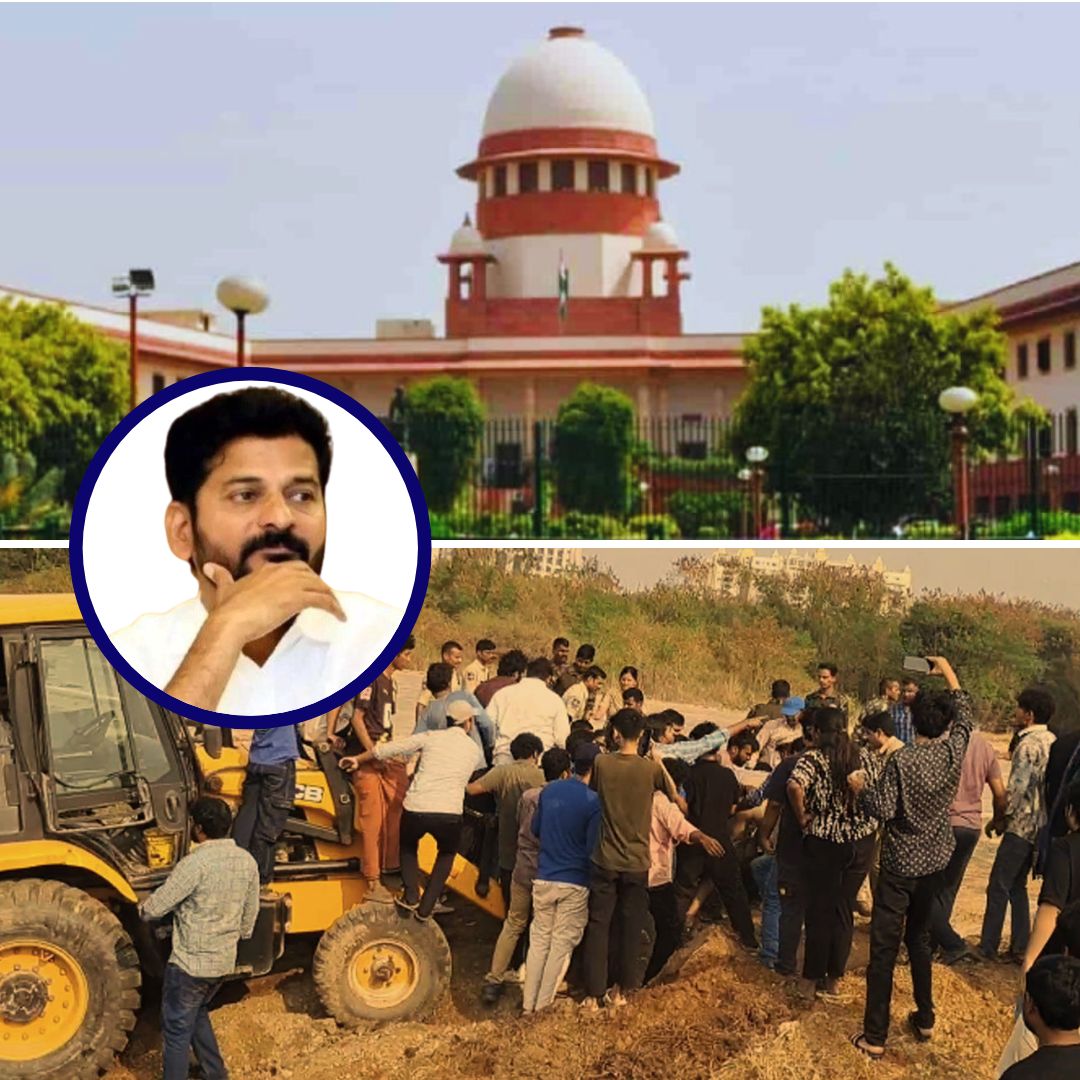In a landmark environmental intervention, the Supreme Court has ordered the Telangana government to submit a concrete plan within four weeks to restore 100 acres of ecologically sensitive land cleared in Hyderabad’s Kancha Gachibowli area, warning that senior bureaucrats could face imprisonment for non-compliance. The next hearing in the case is scheduled for May 15.
The bench led by Justices BR Gavai and AG Masih imposed an immediate halt on all tree-felling activities, directed urgent protection measures for displaced wildlife, and made it clear that attempts to justify the deforestation could result in “temporary prison” for responsible officials.
The disputed land, part of a 400-acre parcel controversially transferred from Hyderabad University to the Telangana Industrial Infrastructure Corporation (TGIIC) for IT infrastructure development, has become a flashpoint between environmentalists, political parties, and developers.
Supreme Court’s Rebuke: “No Bureaucratic Justification”
During the April 16 hearing, the bench lambasted the state for deploying 50 earthmovers over a long weekend (March 30-April 2) to clear vegetation without environmental clearances, calling it “a calculated attempt to circumvent scrutiny.”
Justice Gavai referenced video evidence showing bulldozers uprooting 30-ft-tall trees and herbivores like spotted deer fleeing into residential areas, where they were mauled by stray dogs. “Your officers will face contempt if one more tree falls,” the court warned, directing the Principal Chief Conservator of Forests (PCCF) to personally monitor the site.
The state’s argument that only “exempted species” like subabul and eucalyptus were felled was countered by petitioner affidavits documenting the loss of neem, peepal, and banyan trees – some over 50 years old.
Political Firestorm: Protests and Electoral Promises
The proposed IT park – projected to attract ₹50,000 crore investments and create 5 lakh jobs – has ignited fierce debates ahead of Telangana’s 2024 elections.
Former IT Minister K Taraka Rama Rao (BRS) pledged to convert the land into an “eco-park with urban forests” if re-elected, while student groups like Save Gachibowli Collective allege the clearance violated the Forest Rights Act, 2006.
Satellite imagery from the National Remote Sensing Centre (NRSC) shows 2 sq km of dense vegetation replaced by barren land between March 30 and April 2, coinciding with the detention of 53 protestors at Hyderabad University.
Chief Minister Revanth Reddy’s administration faces mounting pressure as opposition leaders frame the issue as “environmental plunder for corporate interests.”
Wildlife in Peril: Court Directs Immediate Action
The court ordered the Telangana Wildlife Warden to GPS-collar displaced animals, including Indian hares, jungle cats, and peacocks, and relocate them to the Nehru Zoological Park. Municipal authorities must sterilise stray dogs near the site within two weeks, with daily compliance reports submitted to the PCCF.
Ecologists from the Centre for Cellular and Molecular Biology (CCMB) warned that the clearance destroyed a critical corridor connecting the University of Hyderabad campus to the Osman Sagar catchment area, threatening over 80 bird species and 15 reptile varieties documented in 2023 biodiversity surveys.
Legal Tangle: Ownership and Forest Definition
The land’s contested ownership dates to 2011 when Hyderabad University surrendered 400 acres to the Andhra Pradesh government (pre-bifurcation) for “public purposes.” In 2023, Telangana transferred it to TGIIC, which mortgaged 100 acres to a private firm for ₹10,000 crore weeks before the clearance.
While the state claims the area isn’t a “notified forest,” the Central Empowered Committee’s April 10 report notes it met the Supreme Court’s “deemed forest” criteria under the TN Godavarman judgment due to its canopy density and wildlife presence.
The court has now tasked the Telangana High Court’s Registrar (Judicial) with verifying these claims through ground-truthing and drone surveys.
The Logical Indian’s Perspective
This case epitomises India’s struggle to balance ecological preservation with urban expansion. While Hyderabad’s emergence as a global tech hub is commendable, the Supreme Court’s stern stance reminds us that development cannot trample constitutional environmental mandates.
The Logical Indian advocates for participatory planning – where citizens, ecologists, and policymakers collaboratively design projects that harmonise economic growth with biodiversity conservation. As climate change intensifies, can we afford to sacrifice carbon sinks for concrete jungles?











